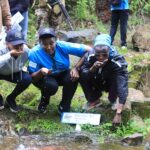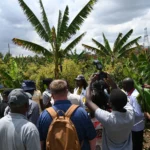By Jasmine Otieno | People Daily
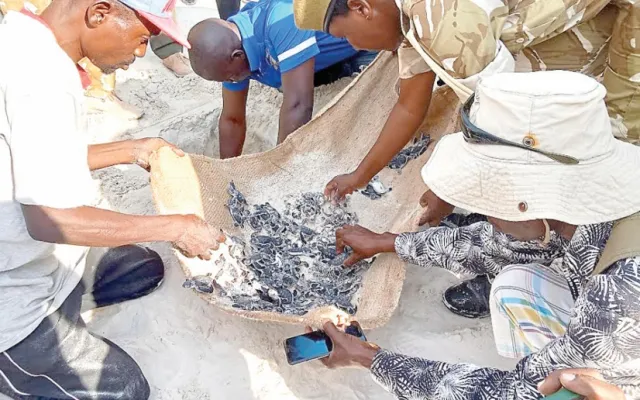
A report by the Kenya Wildlife Service (KWS) and the fisheries department has indicated that the world population of sea turtles is estimated to have declined by 80 per cent over the last 50 years. This decline has been attributed to many factors, among them plastic pollution and illegal fishing.
Omar Hassan, a boat operator at Nyali beach in Mombasa County says such is also the case at the Kenyan Coast, and the menace is affecting both fish and turtles.
He says by-catch (fish or other marine species that are caught unintentionally while fishing), in set gillnets and trawl nets have caused turtles to either drown through entanglement or to be opportunistically harvested by the fishermen.
“Turtles are targeted for their eggs, meat, skin and shells. Sometimes it is intentional, but there are times when it is accidental when turtles alongside fish end up in the trawl and they are not released back to the sea. Sometimes fishermen set up traps for crabs and unluckily a turtle ends up in there. But there are irresponsible fishermen who just target the animals and since they are scarce, their population is endangered. I have seen fishermen in Kilifi County and even Mombasa doing this and I can attest that the turtle population has really declined over the last 20 years,” shares Omar.
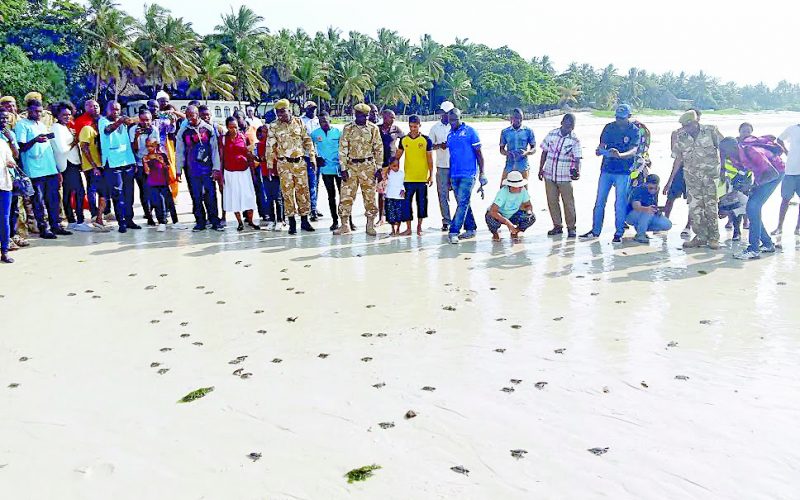
He adds that some communities believe turtle oil has a medicinal and spiritual value, making them a target for poachers as well. While he is aware of the effects of overfishing, he shares that not all fishermen have been well sensitised on the importance of the turtles to the marine ecosystem, especially those from rural parts of the coast.
Turtles hold significant economic, ecological and social values to humanity, but due to the high demand for commercialised sea turtle products, they have been classified as ‘Critically Endangered’ marine species by the World Conservation Union and are listed in the International Union for Conservation of Nature (IUCN) Red List, with the loggerhead, leatherback and olive ridley classified as vulnerable, the green as endangered and the hawksbill as critically endangered.
Threatened Ecosystems
Kenya is home to a variety of turtles and according to a recent KWS report, the population of turtles in Kenya is estimated at 450 individuals along the coastline. They include; the green turtle (Chelonia mydas), hawksbill turtle (Eretmochelys imbricata), loggerhead turtle (Caretta caretta), Olive Ridley turtle (Lepidochelys olivacea), and leatherback turtle (Dermochelys coriacea). The coastal ecosystems, including seagrasses, mangroves, coral reefs, and sand bars in the Kenyan waters have proven to be excellent places for the thriving of turtle populations. However, most of these ecosystems are threatened by pollution, climate change, population growth, and mismanagement of resources.
In a move to sensitise the community on the importance of conserving the turtles, the Chief Administrative Secretary, Ministry of Tourism and Wildlife and Heritage, Wilson Sossion together with Mombasa Senator, Mohammed Faki, led the Mombasa residents to release 147 turtles into the Ocean at Nyali Beach in June. They both called upon locals to end turtle fishing for both conservation of marine ecosystem and the promotion of tourism.
Releasing baby turtles into the oceans gives them a higher chance of survival away from preying birds and other predators. While only about 10 of the released number will survive through to adulthood, the female sea turtles return to where they were hatched to lay eggs if they survive.
In 2005, KWS signed the Indian Ocean South East Asia Marine Turtle Memorandum of Understanding, which establishes a framework through which states of the Indian Ocean and South East Asia region can work together to conserve and replenish depleted sea turtles population.
Speaking at the event, which also marked World Turtles Day, Sossion emphasised the need for harmonised efforts in protection of the marine creatures.
“The Kenyan side is well protected and from the scientific and technical information we are receiving is that the turtles would like to move and stay more on this side. But there is a need to collaborate across and outside Kenya because these are not species restricted to the Kenyan domain. They migrate all the way to South Africa and Indonesia and there is a need for all the nations to work together for the conservation of the turtles,” he said.
KWS, Acting Director General Dr Erastus Kenga emphasised on the importance of sea turtles. “They are part of the wider ecosystem species that are there. On World Turtle Day, we released green turtles, which feed purely on the seagrass, so they are edible, they provide very good oil. They not only confine themselves in Kenya, but the little ones that we released are going to move all the way to Mozambique, South Africa and when they are about 25 years old, they will come and nest in the same places that they have been hatched, so as a country, we are working with our neighbours, Somalia, Tanzania and all the other countries along the Indian Ocean coast to make sure that we are eco-conscious across the borders,” he said.
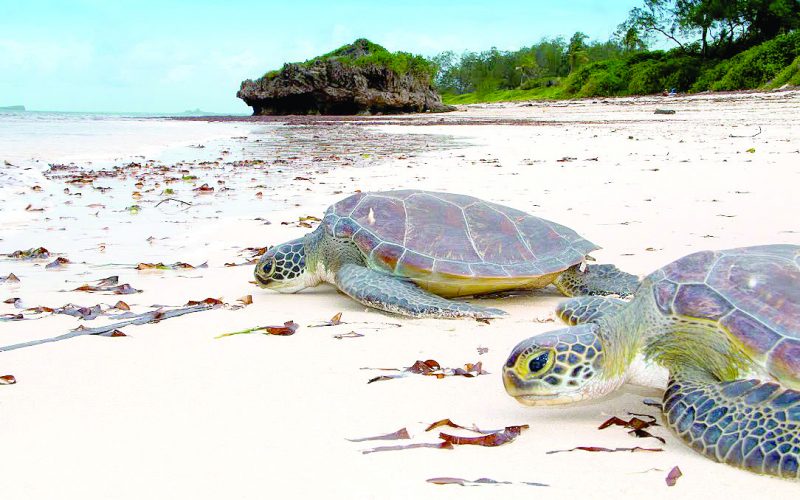
To curb some of these threats posed to turtles, several actions have been taken to make sustainable changes to the coastal ecosystems.
Dr Mohammed Omar, Principal Research Scientist at Wildlife Research and Training Institute, says one of the efforts underway for conservation of the marine species includes the revival of the Sea Turtle Conservation Strategy at the Coast.
The Sea Turtles Conservation initiative involves incentivising community members and volunteers for every nest reported and each successful hatchling. Together with other stakeholders Sea Turtle Conservation conducts intensive awareness creation to bring the community on board and help them to form community-based Turtle Conservation Groups (TCGs), which also assist in monitoring. “The season we are currently in, since the beginning of April, is one which the turtles normally come to lay their eggs and this will go on untill the end of the year. According to our research, every time a turtle starts to lay eggs, it takes about 60 days for the hatching to begin,” shared Dr Omar.
Nest monitoring
Close monitoring of the nests is important, especially in protecting the eggs from other predators, such as crabs, ants and birds. Once they emerge, hatchlings make bite-sized meals for birds, crabs and a host of predators in the ocean. Increased human activities, such as the building of hotels along the beach have also been a threat to the turtle nests.
Other efforts by the community, include strategies to prevent the use of unsustainable and illegal fishing gear, locally managed cleanups and waste collections, community-managed marine protected areas, and community-led mangrove replanting and management. This has helped reduce by-catch and also cases of turtles drowning through entanglement. Most of these initiatives though, have not been able to sustain themselves due to a lack of finances.
To address this, Lt General Walter Koipaton, KWS Board of Trustees, emphasised that more efforts need to be put into partnership with the community. “Taking care of these creatures shouldn’t just happen on such a day only, it should be an ongoing exercise. We are also keen as a board of trustees that proceeds from conservation also get to also benefit the community so that we can partner and become one force for good,” said Koipaton.
This article was produced with support from JRS Biodiversity Foundation and Media for Environment Science Health and Agriculture (MESHA).
https://www.pd.co.ke/news/coastal-communities-unite-to-save-turtles-from-extinction-193013/



